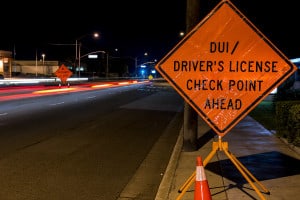 The effectiveness of a sobriety checkpoint has been debated over the years, but, statistics prove that these “road blocks” have reduced the number of alcohol-related vehicle accidents by 18 – 24% in the states that use them. While inconvenient for many drivers who are trying to get home, this reduction is not only about the numbers, but it is also about saving lives. If the average rate of a DUI or DWI arrest attributed to a sobriety checkpoint is one in every 88 vehicles stopped, then there is a clear benefit to the simple “stop and go” of these visible prevention tools.
The effectiveness of a sobriety checkpoint has been debated over the years, but, statistics prove that these “road blocks” have reduced the number of alcohol-related vehicle accidents by 18 – 24% in the states that use them. While inconvenient for many drivers who are trying to get home, this reduction is not only about the numbers, but it is also about saving lives. If the average rate of a DUI or DWI arrest attributed to a sobriety checkpoint is one in every 88 vehicles stopped, then there is a clear benefit to the simple “stop and go” of these visible prevention tools.
Most of the time, a vehicle that is stopped at a checkpoint can be back on the road within minutes. In order to facilitate a speedy exit, a driver is expected to have his or her driver’s license, registration and insurance information ready, much like with any other traffic stop. A police officer is trained to see the signs of a person who may be intoxicated, and, if the driver shows no signs of such activity, then he or she is able to move on without concern.
If a driver exhibits signs of intoxication or other impairment, a law enforcement officer will require that person to submit to field sobriety testing and a breathalyzer test. This ensures the officer that the person is, indeed, sober enough to drive and within the legal limits of a blood alcohol concentration (BAC) reading.
While sobriety checkpoints may be inconvenient for the sober driver, they are important for the safety of others on the road. These checkpoints not only help find drivers who have been drinking, but, they also serve as a living example of the commitment of a state, county or locale to the fight against drunk drivers on our roads.

Leave a Reply
You must be logged in to post a comment.